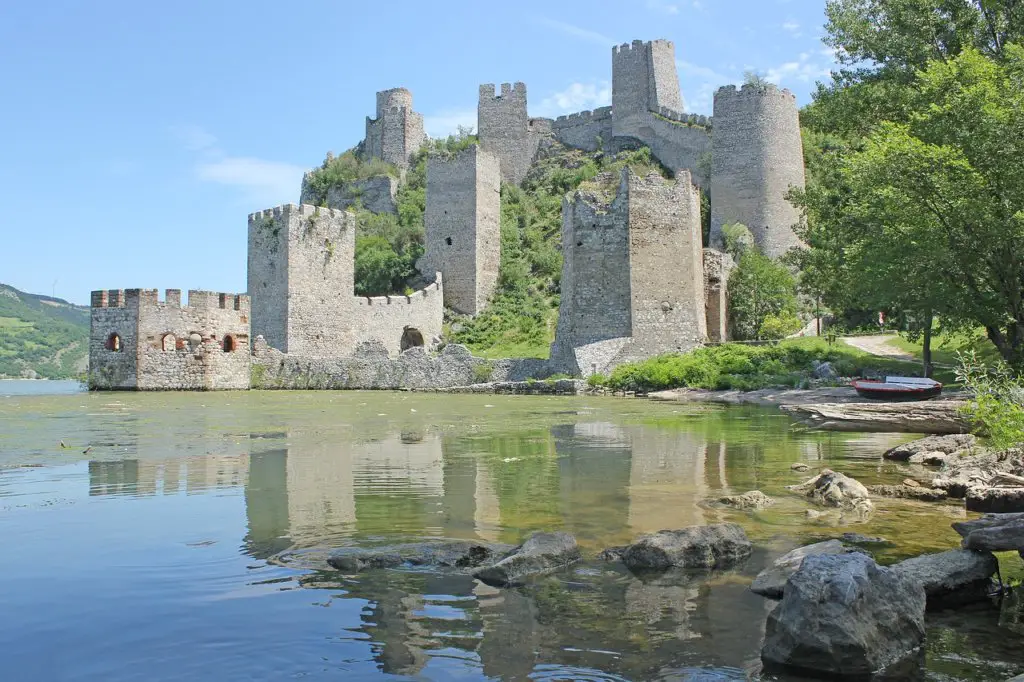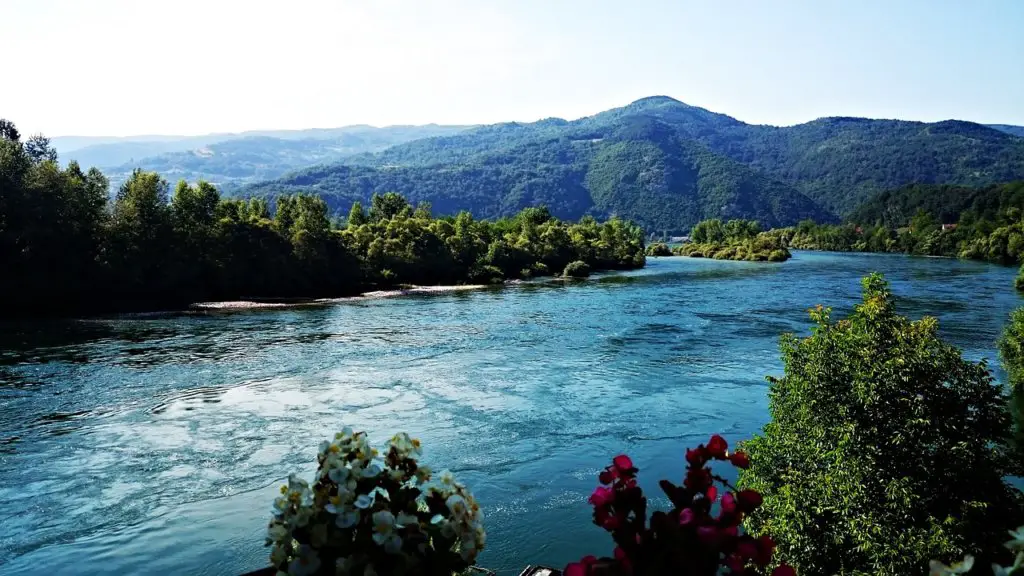Top 12 Serbian Events and Attractions

Serbia is slowly becoming a major touristic destination in Southeast Europe, as more and more people visit it each year. In 2018, 3,196.178 tourists visited the country, an increase of 12% compared to 2017. The majority of them, 53%, stay in Belgrade, which has much to offer, but there are also many places one can visit outside the capital.
Felix Romuliana
A UNESCO World Heritage site, Felix Romuliana located just outside the city of Zajecar, in Eastern Serbia. IT was built by Emperor Galerius upon his abdication and was named after his mother Romula. Some scholars believe that the palace was built on the spot where he was born and later buried. The site is spread across 10 acres and remains of various buildings, like public baths and Jupiter temple, can be seen. Nearby museum in Zajecar holds a vast collection of mosaics and other aftereffects, which may be worth visiting.
Golubac Fortress
Recently renovated Golubac Fortress is one of the finest examples of medieval fortification in Europe. Located on a steep hill above the Danube, it has been built in the 14th century. It has a reputation of one of the hardest fortresses to conquer, having repulsed over 120 attacks in its long history. It also changed hands quite a lot, starting as a Roman settlement. Its owners have been Turks, Bulgarians, Hungarians, Serbs, and Austrians, until 1867, when it was finally turned over to the Principality of Serbia.

AskGamblers Awards
Casino reviews AskGamblers have established themselves as the leading authority in all matters involving gambling. Each year, they host the annual AskGamblers Awards ceremony in the Hyatt Regency hotel in Belgrade. Based on the reviews, they give awards such as Best Casino and Best New Casino. If you are into iGaming, this is a great opportunity to see and hear some of the biggest names in the industry.
Nišville
According to the Guardian, Nišville is one of Europe’s Top 10 jazz festivals. Held annually in the first half of August, it is hosted in Nis, Serbia’s third largest city. Majority of the concerts are held in vast scenic Ottoman fortress from the 18th century. Some of the biggest names in jazz have performed here, including Solomon Burke, Joss Stone, Jean Luc Ponty Quartet, Osibisa, Maria Joao, Brussels Jazz Orchestra and many others. Nis is about an hour and a half south from Belgrade and there are several cheap hotels and hostels offering accommodations in the center of the city.
Novi Sad
Novi Sad is the capital of Vojvodina, Serbia’s northern province. For a long time, the province was under Austro-Hungarian rule and the influence of Vienna can be seen on every step. The second largest city in Serbia is located on the banks of the Danube and boast several festivals worth visiting, with Exit being the biggest name. The city center is dominated by a beautiful Catholic The Name of Mary Church, the largest church in Novi Sad.
Exit Festival
From humble beginnings, Exit has grown to one of the most recognizable festivals in the region. Every year, tens of thousands of people from all over Europe gather in Novi Sad to enjoy some of the best music in the world. Hel in the picturesque surroundings of Petrovaradin Fortress, Exit features some of the biggest names in the music industry today. Beastie Boys, Massive Attack, The Prodigy, and David Guetta are just some of the names that have performed here over the years. It is the largest and most visited music festival in Southeastern Europe.

Guca brass festival
The first Guca Festival was held in the courtyard of the local St Archangel Gabriel, featuring just four brass bands. Today, it regularly attracts hundreds of thousands of visitors, many from abroad. The competition of brass bands is a unique Serbian experience and something everyone should see at least once in a lifetime. The festival lasts for three days, filled with various cultural manifestations, art exhibitions, and other programs. Accompanied by rich Serbian cuisine, it is a must-see for people who enjoy Serbian tradition. Guca is well connected with Belgrade with regular bus departures.
Kustendorf Movie and Music Festival
Kustendorf is a brainchild of renowned director Emir Kusturica. It is held on top of Mokra Gora, a mountain in Western Serbia, in an ethno village Drvengrad, which is a sight worth seeing even without a festival. Originally built for Kusturica’s movie Life is a Miracle, it is a collection of apartments and houses for rent, shops, galleries, restaurants and a cinema done in the 19th-century style.
Devil’s Town
A natural phenomenon consisting of 202 rock formation raising up to 30 meters, Devil’s Town is located in Southern Serbia, near the town of Kursumlija, on the slopes on Mount Radan. There are several wooden platforms that allow a better view of the eroded rocks, and you can also see a thermal spring and a 3th-century gold mine. Local restaurant offers dishes made under sac, a cast-iron bell, which is a well-known Serbian specialty.
Studenica Monastery
Built in the 12th century by Stefan Nemanja, a Serbian ruler, Studenica Monastery is placed on the UNESCO World Heritage list. It features Byzantine and Romanesque style. Originally, there were nine churches, but only two remain today. The Church of Our Lady is one of the finest examples of Byzantine style today. The monastery offers simple rooms if you want to stay a night or two in the beautiful surroundings on the banks of Studenica River. If you can plan your visit for May 24, you will get to see a festival dedicated to Stefan Nemanja’s feast day.

Kopaonik National Park
Kopaonik National Park is a great place to explore mountain life either by bike or on foot in warmer months, but it really shines during the winter, when it transforms into one of the largest ski centers in Southeast Europe. The main ski center is located on an altitude of 5,577 feet, called Ravni Kopaonik. The highest station is Pančićev Peak, at 6,614 feet. In total, Kopaonik boasts over 11 kilometers of cross-country ski trails.

Fruska Gora Mountain and National Park
Conveniently located between Novi Sad and Belgrade, Fruska Gora represents a string of low-lying hills spread across the area. The highest hill is some 1,768 feet. Inside the boundaries of Fruska Gora National Park, there are 17 monasteries, hailing from the 15th century and later. Fruska Gora has abundant wildlife, including deer and wild boars and a lot of birds. The region is famous for its wines and there are some 60 wineries in the area.
From endless flatlands of Vojvodina to breathtaking mountains in the south, Serbia is a very diverse country. Always at the crossroads between East and West, but managing to remain its own and keep its unique identity, the country has much to offer to its visitors. Hopefully, our guide has given you at least a glimpse of what awaits you.